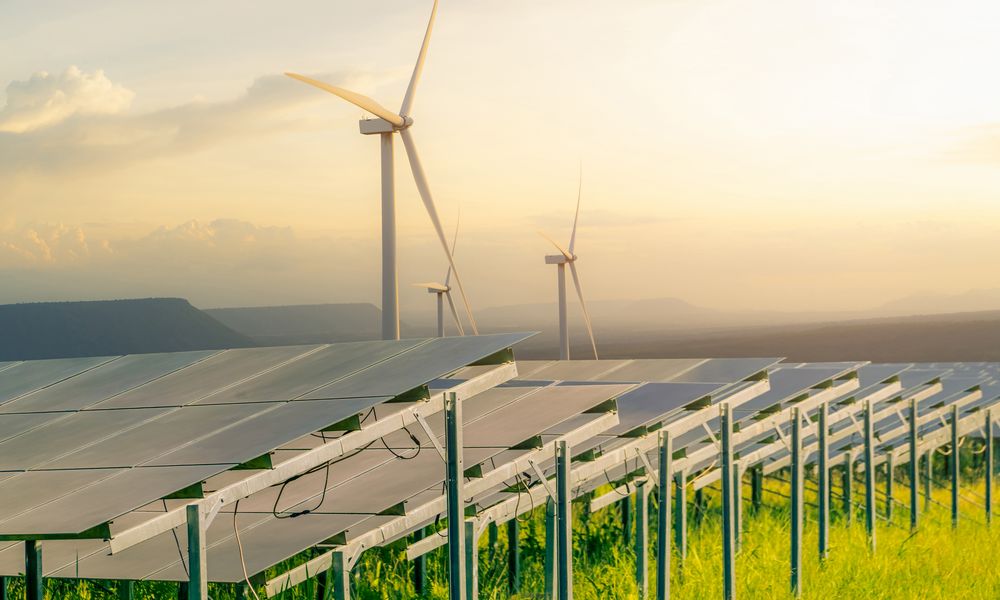5 minutes to understand the landscaping sector’s decarbonization issues
To reach carbon neutrality by 2050, landscaping sector is concerned by the decarbonization phenomenon... But it also is a decarbonizing tool in itself!

Companies decarbonization is one of the main levers for stemming global warming and reaching carbon neutrality by 2050. At a time when the European market price per ton of carbon is rocketing, “decarbonization at source” is gathering pace and is now seen as anticipating future legislation as well as enabling cost savings and increasing competitiveness—and landscaping firms are no stranger to the phenomenon. Here’s our round-up of the various decarbonization issues being tackled by a sector in the throes of change.

How to decarbonize landscaping sector?
All industries are concerned and there’s no free pass for the landscaping sector: carbon neutrality is an integral part of the sector’s new issues, across the whole spectrum of landscaping professions: landscape designers and architects, manufacturers, specifiers, and all. And it must be said that there’s no shortage of action paths for limiting the use of fossil fuels!
Less pollution from vans and utility vehicles
In early 2023, the European Parliament ratified the objective of zero carbon emissions from new vehicles and vans by 2025. Thirteen European countries have already engaged in this transition by implementing low-emission zones (LEZ), with 247 such zones recorded in 2020, and that’s not counting China, Mexico, Japan, or Israel (1). Fuel-burning vans and pickups must adapt and are swapping their engines for electric motors, upon which they gain the headache of route planning with limited range on a single charge and the scarcity of charging stations in rural areas. An alternative solution is hydrogen-powered vehicles. Their range is longer, but there’s a question mark against their carbon footprint: as things stand, the energy that goes into producing hydrogen is twice the energy it releases.
Which utility vehicle should you pick?
Batteries taking over in landscaping equipment
The switch to battery power in lawnmowers, brush cutters, and other maintenance tools is already well advanced. Many innovations in this field have been on show at successive editions of the Paysalia trade show. Apart from its positive environmental impact, this technology is better at preventing occupational risks. It eliminates vibration, reducing musculoskeletal disorders, and comes with a huge drop in noise. New energy sources—wind, solar, hydro, biomass—must now be developed for charging these batteries.
Redrawing supply circuits
To drastically cut CO2 emissions, the landscaping sector must stop sourcing materials and plants from far-flung regions and give more thought to the supply chain’s carbon impact. Relocalizing horticultural and industrial production and raw material supplies is a must for restoring short supply circuits to prominence. A fine example is being set with the initiative of local purchase charter schemes in France’s Auvergne-Rhône-Alpes region. As a bonus, the plants they buy are sure to be more resistant and resilient faced with the local climate!
The landscaping sector is a decarbonizing tool in itself
Planting pocket woods in cities, installing green roofs, restoring soil infiltration, etc. All these trends energizing the landscaping sector are also paths to carbon neutrality. Carbon-free energy and the insistence on bio-based materials are already a core element in sustainable urban planning, with innovative ecological projects spreading to the far corners of the globe.
With its skills, know-how, and knowledge of nature and biodiversity down to the finest detail, the landscape sector is ideally placed as a sector that can not only decarbonize itself but also help decarbonize related industries, like construction, which in France accounts for 43% of total energy consumption and generates 23% of greenhouse gas emissions (2).
Construction and landscaping
Construction and renovation process are heading in this direction, with a changed approach to the whole lifecycle of materials from extraction to final disposal. We are also witnessing a clear improvement in insulation along with increasing use of heat pumps, planted walls and roofs, and materials with higher thermal inertia like natural stone, thus attenuating one of the most energy-costly aspects. Communal gardens, balconies, and patios also enjoy the expertise of landscaping firms in their transformation to micro-scale carbon sinks.
Sustainable urban planning and landscaping
District and regional councils also have a role to play in meeting the climate objectives set down in the Paris Agreement, and they can count on the landscaping sector’s ingenuity when it comes to renewing their street furniture, revamping their communal spaces, decreasing their nighttime energy consumption for lighting, designing bioclimatic neighborhoods, etc. In short, there’s no shortage of improvement paths and there’s no sector with more solutions to offer than landscaping.
Say no to greenwashing!
While carbon neutrality is an important objective for the collective good, a lot of companies see it as a financial straitjacket and settle for offsetting their greenhouse gas emissions via the cap-and-trade market rather than engaging actions for reducing emissions “at source”, while blithely communicating about their “carbon neutrality” and taking advantage of a general confusion around this concept.
To set a framework for such deviations, a new international standard, ISO 14068, is being finalized and will be published on 24 July 2024. It will provide a clearer specification of the principles, requirements, and recommendations in respect of achieving and demonstrating carbon neutrality (3).
To help you gain a full understanding of decarbonization issues, the Paysalia trade show invites you to meet the experts and discover an extensive range of the most innovative solutions on the market. You can find out how to address these issues as a landscaping company and turn carbon neutrality into a business development opportunity. Just ask for your free admission badge!
(1) Ministère de l'Ecologie: Zones à faibles émissions :19 collectivités s’engagent pour la qualité de l’air
(2) Ministère de l'Ecologie: Construction et performance environnementale du bâtiment
(3) AFNOR: Gestion des gaz à effet de serre et du changement climatique et activités associées - Neutralité carbone
© Photo credit: Artinun / Adobe Stock



